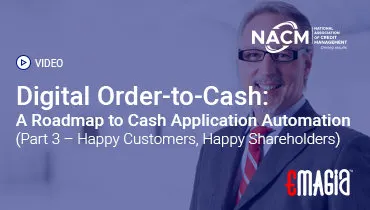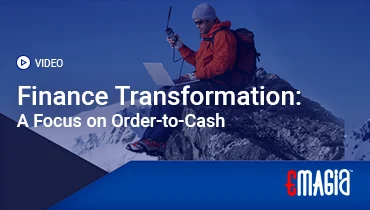Invoice automation is transforming how businesses manage accounts payable (AP) by integrating advanced technologies such as AI, OCR, and intelligent workflows. This article explores every aspect of invoice automation — from fundamentals to advanced strategies, benefits, implementation, and future trends. By the end, you’ll understand why invoice automation is a game-changer for financial operations.
Understanding Invoice Automation
Invoice automation is the process of digitizing and streamlining invoice handling, reducing manual work, and improving efficiency. It uses AI-driven systems and OCR technology to process, validate, match, and pay invoices automatically.
Core Components of Invoice Automation
- Invoice Capture: Automatically collecting invoices through email, portals, or scanners.
- Data Extraction: Using OCR to extract invoice data.
- Approval Workflow: Routing invoices to approvers based on predefined rules.
- Matching: Comparing invoices to purchase orders and receipts automatically.
- Payment Processing: Triggering payments once invoices are approved.
Why Invoice Automation Matters
Organizations face challenges with manual invoice processing, including high costs, errors, delays, and compliance risks. Invoice automation addresses these challenges by improving speed, accuracy, and financial visibility.
Key Benefits of Invoice Automation
- Time Savings: Reduces invoice processing time by up to 70%.
- Cost Reduction: Lower AP costs and fewer late payment penalties.
- Improved Accuracy: Minimizes human errors and duplicate payments.
- Compliance: Better record-keeping for audits.
- Vendor Relationships: Faster payments and improved trust.
How Invoice Automation Works
The process begins with capturing the invoice, followed by automated extraction of details, verification, approval routing, matching with purchase orders, and executing payments. Integration with ERP systems ensures seamless flow.
Invoice Capture Methods
- Email-based automation
- Supplier portals
- Mobile scanning
- Electronic data interchange (EDI)
Data Validation and OCR Accuracy
OCR converts invoices into digital data. AI ensures validation by cross-referencing invoice details with purchase orders and supplier records.
Invoice Matching and Reconciliation
Matching verifies that invoices align with purchase orders and receipts. Automation reduces manual verification, speeds up reconciliation, and minimizes disputes.
Matching Types
- 2-way matching: Invoice and purchase order
- 3-way matching: Invoice, purchase order, and receipt
Getting Started with Invoice Automation
Before implementing invoice automation, businesses must assess their current AP process, identify inefficiencies, choose the right automation tool, and plan a phased rollout.
Assessment of Current Processes
Understand invoice volumes, processing times, error rates, and approval workflows to identify opportunities for automation.
Choosing the Right Software
Look for tools with OCR accuracy, AI capabilities, ERP integration, scalable workflows, and robust reporting.
Implementation Strategy
Plan a phased rollout with pilot testing to ensure smooth adoption, reduce risk, and train AP teams effectively.
Advanced Strategies for Invoice Automation
After understanding the basics of invoice automation, businesses should focus on advanced strategies that maximize efficiency and ROI. This includes AI integration, advanced workflow automation, and data analytics.
AI-Powered Invoice Automation
Artificial intelligence enhances invoice automation by improving accuracy, predicting issues, and enabling intelligent decision-making. AI can detect anomalies, flag duplicate invoices, and predict approval bottlenecks.
Benefits of AI Integration
- Automated anomaly detection
- Faster invoice approvals through intelligent routing
- Improved supplier relationship management
- Data-driven insights for strategic decision-making
Workflow Optimization
Customizing automation workflows for different invoice types and supplier requirements ensures maximum efficiency. Dynamic routing rules and automated reminders improve turnaround time.
Steps to Optimize Invoice Workflows
- Segment invoices by priority and complexity
- Set automated routing rules for approvals
- Enable automated notifications for delays or errors
- Integrate with ERP and accounting systems
Challenges in Invoice Automation Implementation
While invoice automation offers huge benefits, businesses often face challenges that must be addressed for successful adoption.
Common Challenges
- Data Quality Issues: Poor data quality can affect OCR accuracy.
- Resistance to Change: Staff may resist shifting from manual to automated processes.
- Integration Complexity: Connecting automation tools to existing ERP systems can be complex.
- Scalability Concerns: Ensuring the system can scale with growing invoice volumes.
Overcoming Challenges
Successful adoption requires strong change management, staff training, phased rollouts, and choosing scalable software solutions.
Case Studies: Real-World Invoice Automation Success
Several organizations have transformed their AP processes through invoice automation. Here are examples of their journeys and benefits achieved.
Case Study 1: Manufacturing Company
A global manufacturing firm reduced invoice processing time by 65% by implementing AI-driven invoice automation. OCR accuracy reached 98%, and AP staff productivity increased by 40%.
Case Study 2: Retail Chain
A retail chain integrated invoice automation with their ERP, enabling real-time invoice approvals and reducing late payment penalties by 45%. Vendor satisfaction improved due to faster payments.
Case Study 3: Professional Services Firm
By automating invoice matching and approvals, a professional services firm improved compliance and reduced invoice disputes by 70%. The firm also improved cash flow visibility and forecasting.
Measuring the Success of Invoice Automation
Tracking the right KPIs ensures that invoice automation delivers value and continuous improvement.
Key Metrics to Track
- Invoice processing time
- Cost per invoice processed
- OCR data accuracy rate
- Percentage of invoices processed without exceptions
- Supplier satisfaction levels
- Reduction in late payment penalties
Future Trends in Invoice Automation
Invoice automation is evolving with advances in AI, machine learning, and blockchain technology. Businesses that stay ahead of trends will gain competitive advantages.
Emerging Trends
- AI Predictive Analytics: Predicting payment delays and optimizing cash flow.
- Blockchain in Invoice Automation: Enhancing security and transparency.
- Self-Service Supplier Portals: Empowering suppliers to track invoice status.
- Integration with ERP & AI Tools: Creating fully intelligent financial systems.
The Future of AP Departments
Accounts payable teams will shift from manual processing to strategic financial roles, focusing on relationship management, cash optimization, and data-driven decision-making.
Benefits of Invoice Automation
Invoice automation delivers far more than efficiency improvements. It transforms accounts payable into a strategic business function, creating measurable benefits across operations, finance, and vendor relationships.
Time Savings and Operational Efficiency
Automation significantly reduces the time needed to process invoices by eliminating repetitive manual work, enabling AP teams to focus on high-value activities.
- Faster invoice processing and approval
- Reduction in manual errors
- Streamlined workflows and fewer bottlenecks
Cost Savings
Reducing manual labor, avoiding late payment penalties, and taking advantage of early payment discounts are tangible cost benefits of automation.
- Lower processing costs
- Reduced late fees and penalties
- Improved cash flow management
Accuracy and Compliance
Automation improves accuracy through OCR and AI validation. This helps maintain regulatory compliance and ensures audit readiness.
- Improved data accuracy
- Better compliance with accounting standards
- Clear audit trails for every transaction
Vendor Relationship Management
Automation improves vendor relationships by ensuring timely payments, transparent communication, and faster dispute resolution.
- Reduced vendor queries
- Faster dispute resolution
- Stronger supplier partnerships
Compliance and Security in Invoice Automation
Compliance and security are critical in finance. Automated systems can help ensure that invoices follow internal policies and external regulations.
Key Compliance Benefits
- Automated policy enforcement
- Maintaining consistent approval workflows
- Audit trails for every invoice
- Adherence to tax and accounting regulations
Data Security Features
Invoice automation solutions often offer encryption, secure access control, and compliance with data protection regulations to safeguard sensitive financial data.
Vendor Relations and Collaboration
Modern AP departments leverage automation to build stronger vendor relationships through better transparency, communication, and collaboration.
Best Practices for Vendor Collaboration
- Providing vendor portals for invoice tracking
- Automated payment notifications
- Transparent payment schedules
- Collaborative dispute resolution tools
Return on Investment (ROI) from Invoice Automation
Investing in invoice automation delivers measurable ROI, improving operational efficiency and reducing costs.
Calculating ROI
To calculate ROI for invoice automation, measure cost savings, efficiency gains, error reduction, and improved cash flow against implementation costs.
ROI Formula
ROI (%) = [(Savings + Efficiency Gains) – Costs] ÷ Costs × 100
Examples of ROI
- Reduction in invoice processing costs by 50%
- 70% faster invoice approvals
- Improved working capital through better payment timing
- Reduction in late payment penalties by up to 80%
Practical Tips for Maximizing Invoice Automation Benefits
- Integrate automation with ERP systems for end-to-end efficiency
- Use AI for predictive analytics in cash flow planning
- Train AP teams on new tools and workflows
- Monitor KPIs regularly for continuous improvement
- Maintain clear communication with vendors
Key Takeaways from Invoice Automation
- Invoice automation transforms AP operations into a strategic function
- Automation improves accuracy, compliance, and vendor relationships
- AI integration offers predictive insights and operational intelligence
- Clear KPIs and continuous monitoring maximize ROI
- Vendor collaboration is strengthened through transparent processes
How Emagia Helps Businesses with Invoice Automation
Emagia offers an advanced invoice automation solution designed to streamline accounts payable processes, improve accuracy, ensure compliance, and optimize cash flow. Our solutions are tailored to each client’s needs, ensuring maximum ROI.
Key Emagia Capabilities
- AI-Powered Invoice Processing: Leveraging AI and machine learning for faster and more accurate invoice data capture.
- End-to-End AP Automation: From invoice capture to payment reconciliation, fully automated workflows.
- Integration with ERP Systems: Seamless ERP integration to maintain data consistency and financial control.
- Compliance and Audit Readiness: Automated policy enforcement and audit trails to meet regulatory requirements.
- Vendor Collaboration Tools: Self-service portals and real-time communication tools for improved supplier relations.
Benefits of Choosing Emagia
- Reduced invoice processing costs by up to 50%
- Increased processing speed and accuracy
- Enhanced compliance and audit capabilities
- Better vendor relationships and faster dispute resolution
- Improved cash flow and working capital management
FAQs About Invoice Automation
What is invoice automation?
Invoice automation is the process of using software to streamline the capture, processing, approval, and payment of invoices without manual intervention.
How does AI improve invoice automation?
AI enhances invoice automation by accurately capturing invoice data using OCR, detecting errors, predicting payment delays, and optimizing workflows.
What are the benefits of invoice automation?
Key benefits include reduced processing time, lower costs, improved accuracy, better compliance, enhanced vendor relationships, and optimized cash flow.
What are common challenges in implementing invoice automation?
Common challenges include data quality issues, resistance to change, integration complexity, and scalability concerns.
How can businesses measure the ROI of invoice automation?
Businesses can measure ROI by tracking cost savings, efficiency gains, error reduction, improved compliance, and cash flow benefits versus implementation costs.
Frequently Asked Questions About Invoice Automation
What is invoice automation?
Invoice automation is the use of technology to streamline the capture, processing, approval, and payment of invoices without manual intervention, improving accuracy and efficiency.
How does AI improve invoice automation?
AI enhances invoice automation by extracting data using Optical Character Recognition (OCR), validating information, detecting anomalies, predicting payment delays, and optimizing workflows.
What are the main benefits of invoice automation?
The key benefits include faster invoice processing, reduced operational costs, fewer errors, improved compliance, enhanced vendor relationships, and optimized cash flow.
What types of businesses can benefit from invoice automation?
Any organization with high volumes of invoices — including manufacturing, retail, healthcare, finance, and logistics — can benefit from invoice automation.
What challenges do businesses face when implementing invoice automation?
Common challenges include integration complexity with existing ERP systems, change management, data quality issues, and ensuring compliance with financial regulations.
How much does invoice automation cost?
The cost depends on factors such as the volume of invoices, complexity of workflows, chosen software, and integration requirements. Many solutions offer scalable pricing models to fit different budgets.
How can invoice automation improve vendor relationships?
By enabling faster payments, providing real-time invoice status tracking, reducing disputes, and improving communication, invoice automation strengthens vendor trust and collaboration.
Can invoice automation handle exceptions and disputes?
Yes, modern systems incorporate AI and workflow automation to detect anomalies, route exceptions for review, and automate dispute resolution to ensure accuracy and compliance.
How do I measure the ROI of invoice automation?
ROI can be measured by comparing cost savings, processing efficiency, error reduction, compliance benefits, and improved vendor relations against the cost of implementation and maintenance.
What is the future of invoice automation?
The future lies in intelligent automation with AI-powered analytics, predictive cash flow management, seamless ERP integration, self-service vendor portals, and fully autonomous AP operations.



